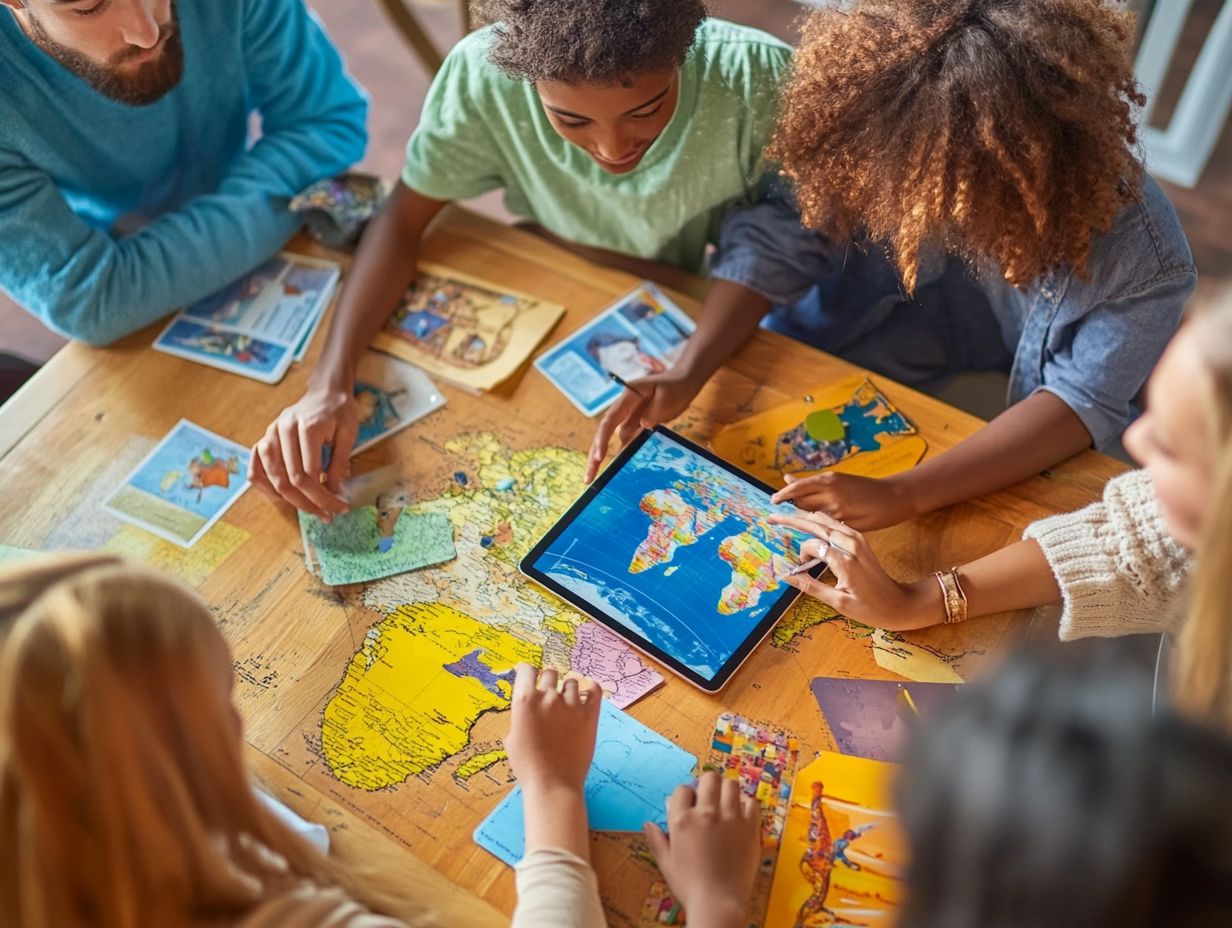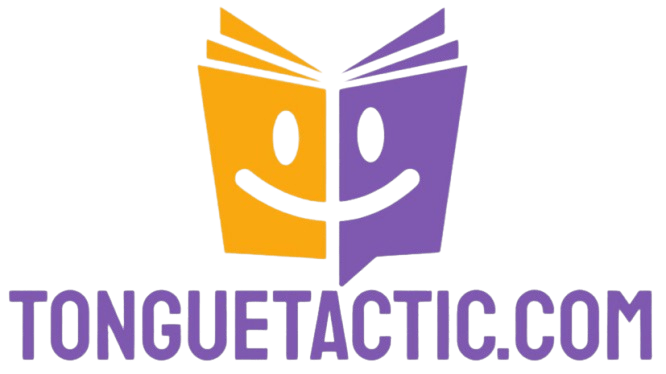7 techniques for overcoming language barriers
Language barriers can pose substantial challenges in communication, whether you’re engaging in personal conversations or navigating the complexities of business interactions.
With the right strategies at your disposal, you can adeptly overcome these obstacles. This article delves into seven practical techniques designed to bridge the communication gap, such as learning essential phrases, leveraging visual aids, and embracing cultural nuances.
It examines the common challenges that language barriers present, their effects on communication and business dynamics, and how fostering a language-inclusive environment can promote equality.
Dive in to discover how you can sharpen your communication skills and connect across language barriers!
Contents
- Key Takeaways:
- 1. Learn Basic Phrases in Different Languages
- 2. Use Visual Aids and Non-Verbal Communication
- 3. Utilize Technology and Translation Tools
- 4. Be Patient and Avoid Stereotyping
- 5. Use Simple and Clear Language
- 6. Practice Active Listening and Ask for Clarification
- 7. Respect and Embrace Cultural Differences
- What Are the Common Challenges of Language Barriers?
- How Can Language Barriers Affect Communication and Business?
- What Are the Benefits of Overcoming Language Barriers?
- How Can a Business Create a Language-Inclusive Environment?
- What Are the Strategies for Effective Communication Across Language Barriers?
- How Can a Business Ensure Equal Opportunities for Non-Native Speakers?
- Frequently Asked Questions
Key Takeaways:

- Learning basic phrases improves communication.
- Visual aids help when language falls short.
- Translation tools can enhance effective communication.
1. Learn Basic Phrases in Different Languages
In today s interconnected world, where online learning websites have become essential for skill development, learning basic phrases in different languages is crucial for breaking down language barriers and ensuring effective communication in diverse settings.
This is particularly important in corporate environments. Bilingual employees those who speak two languages can bridge gaps and enhance collaboration, making language courses increasingly valuable for both individuals and organizations.
By focusing on foundational phrases, you can foster an inclusive atmosphere that promotes mutual respect and understanding among colleagues from various cultural backgrounds.
The ability to convey even the simplest ideas in another language can dramatically elevate interactions within teams, sparking heightened creativity and innovation.
For instance, platforms like Duolingo and Rosetta Stone offer accessible routes to mastering a new language, allowing employees to learn at their own pace no stress, just progress.
Investing in language training improves team dynamics and reduces misunderstandings, which directly boosts productivity levels.
Equipping your staff with these essential language skills creates a more cohesive work environment where collaboration thrives, diverse perspectives are appreciated, and success in a competitive landscape becomes more attainable.
2. Use Visual Aids and Non-Verbal Communication
Utilizing visual aids and non-verbal communication can transform your understanding and retention of information, enabling you to transcend language barriers that often obstruct effective interactions in both business and educational arenas.
This multifaceted approach allows you to grasp complex concepts more easily through infographics, charts, and images, which serve as powerful tools for illustrating key points. For instance, an infographic can clarify statistics far better than a spoken explanation alone.
Non-verbal cues, such as facial expressions and body language, convey emotions and reactions effectively, offering context that words might overlook. Being aware of cultural differences in these non-verbal cues is essential; for example, a thumbs up might mean ‘good job’ in many cultures, but not in all.
Ultimately, approaching communication with empathy ensures that you and others can connect on a deeper level, fostering enhanced collaboration and understanding.
3. Utilize Technology and Translation Tools

In a world where technology has transformed communication, you can easily harness translation tools and services to overcome language barriers and connect with a broader online community.
Whether you re using AI-driven translation apps that instantly convert spoken dialogue or online platforms that translate entire documents, the options available to you are impressive. Start using these tools today!
While these tools provide invaluable support for daily interactions, professional interpreter services are essential in high-stakes business environments. They ensure accuracy in nuanced conversations and help establish trustworthy relationships across cultures.
Globalization is breaking geographical barriers. Using advanced technology helps teams collaborate more effectively, paving the way for successful exchanges and partnerships in diverse markets.
4. Be Patient and Avoid Stereotyping
Exercising patience and steering clear of stereotypes are essential strategies for overcoming language barriers. Implementing 7 tips for balancing language and culture cultivates an atmosphere of empathy and understanding, vital for effective communication amid cultural challenges.
When you engage in conversations with non-native speakers, take the time to listen actively and respond thoughtfully. This approach can truly transform the interaction.
Being mindful of your own biases helps prevent misunderstandings and fosters an appreciation for diverse viewpoints. Use open-ended questions to encourage richer dialogue and reduce the likelihood of pigeonholing individuals into preconceived notions.
This thoughtful approach enhances mutual respect and lays the groundwork for successful collaborations. When individuals feel valued and understood, they are more inclined to share their unique perspectives, enriching the conversation for everyone involved.
5. Use Simple and Clear Language
Using simple and clear language is crucial for minimizing communication challenges. This enables you to express your thoughts effectively while accommodating diverse language skills across various audiences.
This is especially significant in international business settings, where cultural and linguistic differences can lead to misunderstandings.
Replace jargon with universally understood terms, use analogies, and simplify sentence structures to enhance clarity. For instance, instead of saying “leverage your assets,” advise using “use what you own wisely.” Such straightforward communication promotes better understanding and builds trust.
As teams collaborate across borders, effective communication becomes the cornerstone of successful partnerships and operations. Don’t miss out on building strong connections!
6. Practice Active Listening and Ask for Clarification

Practicing active listening and seeking clarification can greatly enhance your communication effectiveness, especially when navigating the complexities of language barriers in corporate and educational settings.
This vital skill allows you to forge a deeper understanding with others, creating connections that transcend mere words.
Employ techniques like summarizing key points and asking open-ended questions to cultivate an inviting atmosphere where speakers feel valued and truly heard.
Empathy plays a crucial role here; when you genuinely strive to understand the speaker’s perspective, you build trust and foster collaboration. Refine these active listening strategies to transform your interactions and pave the way for more meaningful and productive dialogues.
7. Respect and Embrace Cultural Differences
Respecting and embracing cultural differences is essential for creating an inclusive environment. This approach helps overcome language barriers and enhances international business relations.
When you acknowledge the diverse backgrounds and perspectives of your teammates, you naturally build understanding and collaboration. Imagine being part of a marketing team that includes individuals from various cultures! Together, you can brainstorm creative and universally appealing campaigns that resonate with a wider audience, driving greater customer engagement.
Cultivating an environment of cultural awareness minimizes misunderstandings and conflicts. You become more skilled at appreciating each other s viewpoints. Companies that appreciate different cultures consistently see improved team morale, along with heightened innovation and productivity.
The positive outcomes are clear: embracing cultural differences enriches the workplace and ultimately supports global success. Don’t miss out on the countless benefits that come from overcoming language barriers!
What Are the Common Challenges of Language Barriers?
Language barriers create a range of challenges that can significantly hinder communication, collaboration, and overall effectiveness in both personal and professional settings. These issues often lead to misunderstandings and frustration.
Such obstacles can give rise to serious misinterpretations, where subtle cues and meanings slip through the cracks, fostering an environment steeped in confusion. In the realm of international business, these challenges can obstruct the flow of ideas and information, making it difficult for teams to reach their objectives.
When nuances are overlooked, the risk of mistrust and conflict increases, disrupting team dynamics. Navigating the complexities of diverse linguistic backgrounds tends to reduce productivity, resulting in missed deadlines and a lack of cohesion in team efforts.
Overcoming language barriers boosts cooperation and drives success in today s global marketplace.
How Can Language Barriers Affect Communication and Business?

Language barriers can significantly hinder communication within your teams, leading to misunderstandings, decreased efficiency, and potentially costly missed opportunities in international markets.
Consider a multinational company where a team collaborates across various countries. Misinterpretation of instructions or project goals often occurs due to language discrepancies. These issues can result in costly errors and delays.
During negotiations, if fluency in a common language is lacking, conveying ideas clearly becomes a challenge. This makes it difficult for all parties to reach a consensus. Such scenarios not only strain business relationships but also erode trust among colleagues, ultimately impacting overall performance and profitability.
What Are the Benefits of Overcoming Language Barriers?
Overcoming language barriers opens up a world of benefits for you! This includes improved communication, stronger working relationships, heightened empathy among team members, and a more inclusive corporate culture.
By fostering an environment where diverse languages are welcomed, you can unlock a treasure trove of ideas and perspectives that fuel creativity. Take notes from multinational giants like Google and Unilever, who enhance collaboration across teams by providing language training and translation tools.
These initiatives effectively bridge communication gaps, enabling teams to innovate with greater ease. Consider Unilever’s impactful Dove campaign, which resonated with audiences worldwide an achievement rooted in their commitment to openness.
When you create a workplace where employees feel understood and valued, they re more inclined to share their unique insights. This collaborative spirit can elevate your company to new heights in both innovation and market reach.
Take the first step towards embracing diversity in your workplace today!
How Can a Business Create a Language-Inclusive Environment?
Creating a language-inclusive environment is essential. It starts with using strategies that support employees who speak different languages.
Implement training programs to help your staff communicate effectively across language barriers.
Offer language courses so employees can learn key languages relevant to their roles. Promote simplified language in all internal communications to ensure everyone understands important information.
Fostering a culture of inclusivity in communication creates a cohesive workplace. Here, diverse perspectives are valued, and collaboration thrives.
What Are the Strategies for Effective Communication Across Language Barriers?
Effective communication strategies are vital for navigating language barriers. Every team member should be able to contribute and collaborate seamlessly.
Use visual aids like charts and infographics to explain complex ideas clearly. This helps everyone grasp essential information, no matter their language skills.
Simplify your language by avoiding jargon and using straightforward terms. Active listening is equally important; encourage individuals to ask questions to clarify and engage.
Integrate technology, such as translation tools and apps, to provide instant language support. These strategies enhance communication and foster a culture of inclusivity and engagement, essential for any organization’s success.
How Can a Business Ensure Equal Opportunities for Non-Native Speakers?
Ensuring equal opportunities for non-native speakers within your business is essential for cultivating an inclusive corporate culture that values diversity and fosters collaboration among all team members.
By implementing language support systems, such as translation tools and bilingual resources, you can effectively bridge communication gaps that often hinder understanding.
Tailored training programs equip your teams with the skills they need to thrive in a multicultural environment, promoting professional growth for everyone involved.
Creating a respectful atmosphere where every voice is valued sparks innovation!
Embracing inclusivity will not only boost employee satisfaction but also drive your organization’s growth. Diverse perspectives pave the way for more creative solutions and a robust competitive edge in the market.
Frequently Asked Questions
What are the 7 techniques for overcoming language barriers?
The 7 techniques for overcoming language barriers are:
- Using simple and clear language
- Utilizing visual aids
- Learning key phrases in the other language
- Using interpreters or translation services
- Practicing active listening
- Understanding different cultures
- Preparing ahead of time
How can using simple and clear language help overcome language barriers?
Using simple and clear language allows for better understanding and avoids confusion or misunderstandings.
Why is utilizing visual aids an effective technique for overcoming language barriers?
Visual aids such as pictures, diagrams, or gestures convey meaning and information even when there is a language barrier.
How can learning key phrases in the other language help overcome language barriers?
Learning key phrases helps bridge the communication gap and shows effort and respect towards the other person’s language and culture.
What are some examples of interpreters or translation services that can be used to overcome language barriers?
Examples include professional interpreters, online translation tools, or multilingual staff members.
How does practicing active listening aid in overcoming language barriers?
Active listening, using non-verbal cues and asking clarifying questions, ensures effective communication and understanding.
How does understanding different cultures contribute to overcoming language barriers?
Understanding different cultures helps individuals navigate potential cultural differences and respect each other’s backgrounds, leading to better communication and relationship building.
Act now to ensure that no voice goes unheard in your team!





